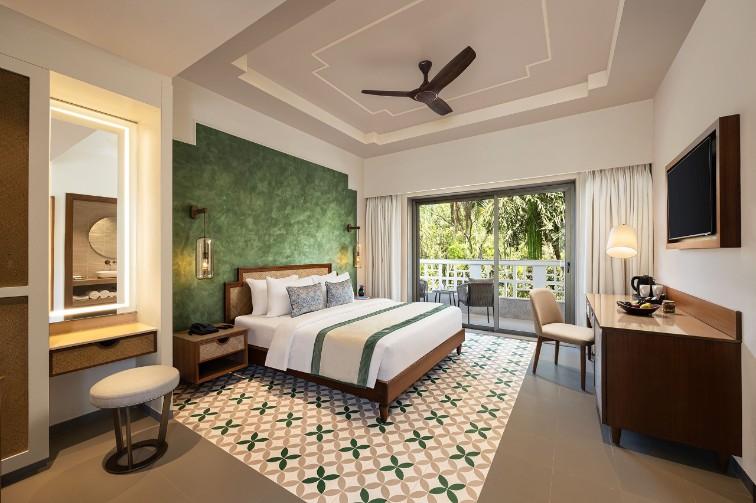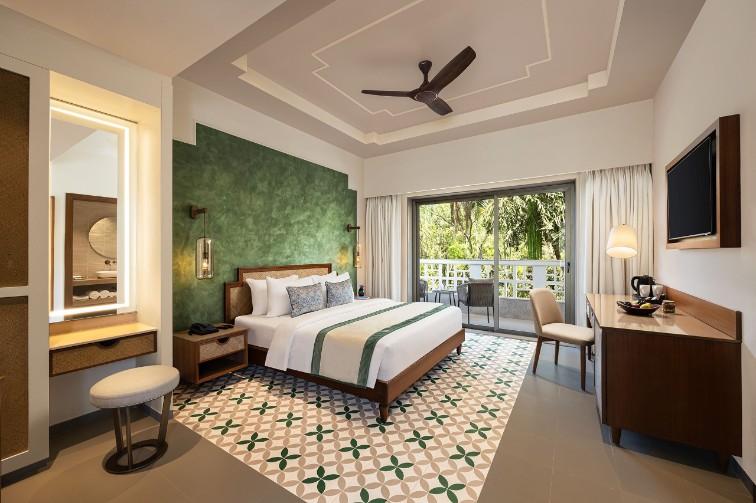
Hotels
•05 min read

Mata Vaishno Devi is not just any destination; it's a pilgrimage that touches the soul and transforms lives. Every year, thousands of devotees make this sacred journey, seeking solace, healing, and blessings. Planning your visit at the right time can elevate your experience, making your pilgrimage comfortable, enriching, and memorable. In this guide, we walk you through the seven best months to visit Mata Vaishno Devi, discussing how weather, crowd levels, and seasonal insights can influence your trip. Additionally, you'll find travel tips and accommodation suggestions designed for a hassle-free yatra.
The timing of your visit plays a crucial role in your overall experience. The temple's location in the mountains means that seasonal changes can significantly influence the weather conditions on the trek. In spring and autumn, the weather is generally pleasant, making the physical exertion of the journey more enjoyable. In contrast, the summer months bring clear skies but also higher crowd densities as families and first-time pilgrims join the journey. For senior citizens or families with children, avoiding extremely hot or rainy seasons can lead to a more comfortable and fulfilling pilgrimage.
Spring is a season of renewal and hope. During March and April, devotees enjoy moderate crowd levels and comfortable weather. The temperatures are just right for a trek without the risk of scorching heat or heavy rains. The entire trail blossoms with seasonal flora, making it an impressive sight, perfect for photography enthusiasts and first-time visitors alike.
Summer brings clear skies that add a special charm to the pilgrimage. May and June are popular for their accessibility and warmth. However, as schools break for summer vacations, the site tends to get busier. For those traveling in summer, it's wise to plan your trek during the cooler parts of the day and carry extra hydration. Despite the crowds, the vibrant atmosphere and clear views make it an ideal season, especially for the energetic and adventurous.
The post-monsoon period brings calm and clarity. With the rains washed away, the landscape becomes lush and inviting, and the cool autumn air makes the trek very pleasant. September and October are known as the best months for photography owing to the serene surroundings and soft natural light. The moderate temperature and lower humidity make for a tranquil pilgrimage, providing both peace and the opportunity to explore the temple and its surroundings without the interference of heavy crowds.
For those who seek a blend of adventure and spirituality, December unveils a magnificent winter retreat. The roads may be frosty, and the higher altitudes can transform into a snowy wonderland. Pilgrims who don’t mind a chill can experience a unique transformation of the temple region into a serene, snow-clad paradise. Remember to pack warm clothing and winter travel gear as you enjoy a pilgrimage that offers both the magic of winter and the spiritual solace of the temple.

The pilgrimage to Mata Vaishno Devi can be experienced differently depending on whether you visit during peak or off-peak seasons. The peak season, which includes summer holidays and festive periods like Navratri, is characterized by a vibrant and energetic atmosphere, lively rituals, and a large congregation of devotees. However, this also means that activities like the trek and temple darshan may require extra patience due to the crowd. In contrast, the off-peak season, such as the monsoon months or early winter periods outside of heavy snowfall, offers a quieter, more reflective environment. Accommodations are more accessible, and the natural beauty of the region can be appreciated without the distraction of large crowds.
Summer months typically feature warm days with temperatures ranging between 20°C to 30°C. In contrast, monsoon seasons bring cooler temperatures along with wet conditions that may affect trail safety. Autumn offers a temperate climate with low humidity, while winter nights and early mornings can be quite chilly, sometimes dropping below 10°C. Understanding these variations will help you prepare and pack accordingly.
When trekking in hot weather, wear light, breathable fabrics and carry sufficient water to avoid dehydration. During the rainy season, waterproof shoes, ponchos, and extra dry clothing are essential to stay comfortable. For winter visits, layering your clothes and carrying thermals are critical to fend off the cold. A small first-aid kit containing basic supplies like bandages, antiseptics, and any necessary medications can also be invaluable regardless of the season.
Pro Tip for First-Time Visitors
Did you know? The best time to visit Mata Vaishno Devi for a less crowded experience is during the early weeks of December or late February. These months offer a peaceful atmosphere and pleasant weather for the trek.
Finding the right accommodation near the temple can enhance your pilgrimage. There is a range of hotels from budget-friendly options to luxurious resorts. Many hotels are well-equipped to cater to the needs of pilgrims, providing essential amenities, comfortable lodging, and even transportation to the base camp. These accommodations not only ensure a restful stay but also offer local insights into the best practices for a smooth yatra.
Proper planning is key to a successful pilgrimage. Booking your accommodation well in advance is highly recommended, particularly if you plan to visit during the peak seasons. Organize your itinerary by factoring in travel time, rest stops, and the pace at which you can comfortably stitch together the journey. Additionally, familiarize yourself with the entry timings, temple rituals, and checkpoint procedures to ensure a seamless experience. Always carry a small backpack equipped with essentials like snacks, extra water, and a power bank, making certain that you can enjoy every moment along the way.

Before beginning your trek, it's important to be prepared. Devotees should note the temple’s entry timings and carry the necessary identification as checkpoints are present along the route. A comfortable pair of shoes and trekking gear are indispensable, and securing a balanced diet with adequate hydration can help manage the physical demands of the journey. The aim is to combine spiritual attainment with physical well-being, hence planning ahead can make the experience more enriching.
March, April, September, October, and December are ideal months due to the pleasant weather and manageable crowd levels.
January is typically the coldest month, with temperatures often dropping below freezing.
Most pilgrims complete the journey in 2-3 days, including travel, the trek, and temple darshan.
The trek is moderately challenging, but facilities like palkis, ponies, and battery cars make it accessible for all age groups.
September, October, and early December are recommended for senior citizens due to the pleasant weather and fewer crowds.
In summary, choosing the best time to visit Mata Vaishno Devi depends on aligning your journey with the weather, crowd levels, and personal needs. Whether you opt for the bloom of spring, the clear skies of summer, the cool embrace of autumn, or the mystical snowfall of winter, each period offers a unique experience that enhances the spiritual journey. With careful planning and an understanding of seasonal variations, your pilgrimage will not only be a testament to faith but also a celebration of nature's diverse moods.